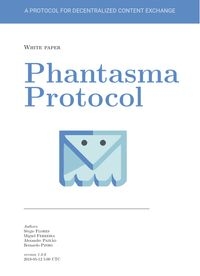
1. Introduction
1.1 The problem
Traditional content-sharing systems were isolated machines running in small local area
networks (LAN). Since then, in the early 2000s, a new paradigm of remote centralized
services emerged. These were the so-called cloud platforms, and anything-as-a-service.
This trends towards centralization and greater specialization in service-providing
brought along with it substantial cost reductions and improved economies-of-scale. How-
ever, we are currently facing the limitations of such solutions. These have inherent disad-
vantages, such as increased risks from having a single point-of-failure, and being locked
in proprietary closed systems.
A brief history of content distribution :
• In 2000, Scour Exchange was shut down. It was one of the first multimedia search
engines.
• In 2001, Napster, an extremely popular P2P network was also shut down.
• In 2002, Soribada was shut down. It was the first P2P network to gain traction in
Asia. It later reopened and was again shut down in 2015.
• In 2004, Suprnova was one of the first websites with a focus on torrent distribution
to disappear.
• In 2009, PirateBay, which was then the leader of content distribution via torrent,
was also shut down.
• In 2010, Limewire, a free program for P2P content distribution was shut down.
• In 2012, Megaupload’s domain was seized, and Kim Dotcom, the owner was ar-
rested. All users of the service lost their files.
• In 2013, Lavabit, the email provider used by Edward Snowden was shut down due
to a gag order. All users of the service lost access to their emails.
• In 2014, iCloud was hacked, leading to massive leaks of Celebrities’ private photos.
As long as user content is owned by a third party, this will continue to happen. The
extent of this problem persists even in Cloud storage services such as Apple’s iCloud
which has faced multiple hacks over the years despite maintaining a centralized system
with high-end security
In the last 5 years, however, a new computing paradigm started to emerge, arising
from the ubiquity and proliferation of small affordable devices (smartphones, smart-
appliances), and increasing PC penetration. The widespread availability of such de-
vices, and their under-utilization, presents a unique opportunity to leverage an enormous
amount of computing resources (cpu cycles, storage, bandwidth). Recent blockchain
projects have been launched to explore this market niche, such as Golem (cpu), Storj/Sia/Filecoin
(storage), Rightmesh/OpenGarden (bandwidth), etc.
At the same time, a burgeoning ecosystem and market is developing for decentralized
applications (dApps) running on smart-contract platforms (Ethereum, NEO, etc). These
applications have many of the same computing requirements of traditional applications,
compounded by the more costly decentralized infrastructure and increasing architectural
complexity. In this climate, the demand for incresingly reliable and available resources
is ever present.
An additional critical requirement for the decentralized applications space is usabil-
ity and developer-friendliness. The remarkably complex logic workflows pose complex
design hurdles to developers and systems architects, and present one of the main obsta-
cles to the expansion of blockchain technology among end-users and companies.
One of the most challenging development spheres for decentralized applications de-
signers is how to manage data - how to store, access and manage it ((B. Krämer, 1997)).
Data is a major bottleneck in dApps, accounting for a major fraction of transaction
execution costs in some popular Ethereum dApps (references). Storing real world data
on the blockchain is prohibitively expensive. Managing it becomes impossible, consid-
ering how little infrastructural support there is. Developers are faced with mounting
implementation details and pitfalls when trying to scale up and develop more complex
and inter-connected dApps in the decentralized world.
1.2 The solution
In this paper, we present Phantasma: an innovative platform to revolutionize applica-
tion development in the key area of data management and content-sharing.
1.2.1 Unique Value Proposition
Phantasma introduces a decentralized content distribution system running on the blockchain,
with strong emphasis on privacy and security. Phantasma is a platform where users
control their own content instead of relying on third party entities to host, secure and
manage it for them.
Relying on third party services for something as critical and personal like email is
dangerous. Companies can be hacked, bankruptcies can happen and government entities
can force access into emails. Also, for those who are content creators, such as the ones
creating videos, games, music and other monetized content. Giving up a large percent-
age of their revenue can be very discouraging.
Not only that, content creators are fully tied to the platform holders, who often en-
force drastic rule changes which lowers their revenue, events over which creators have
no choice but to accept.




